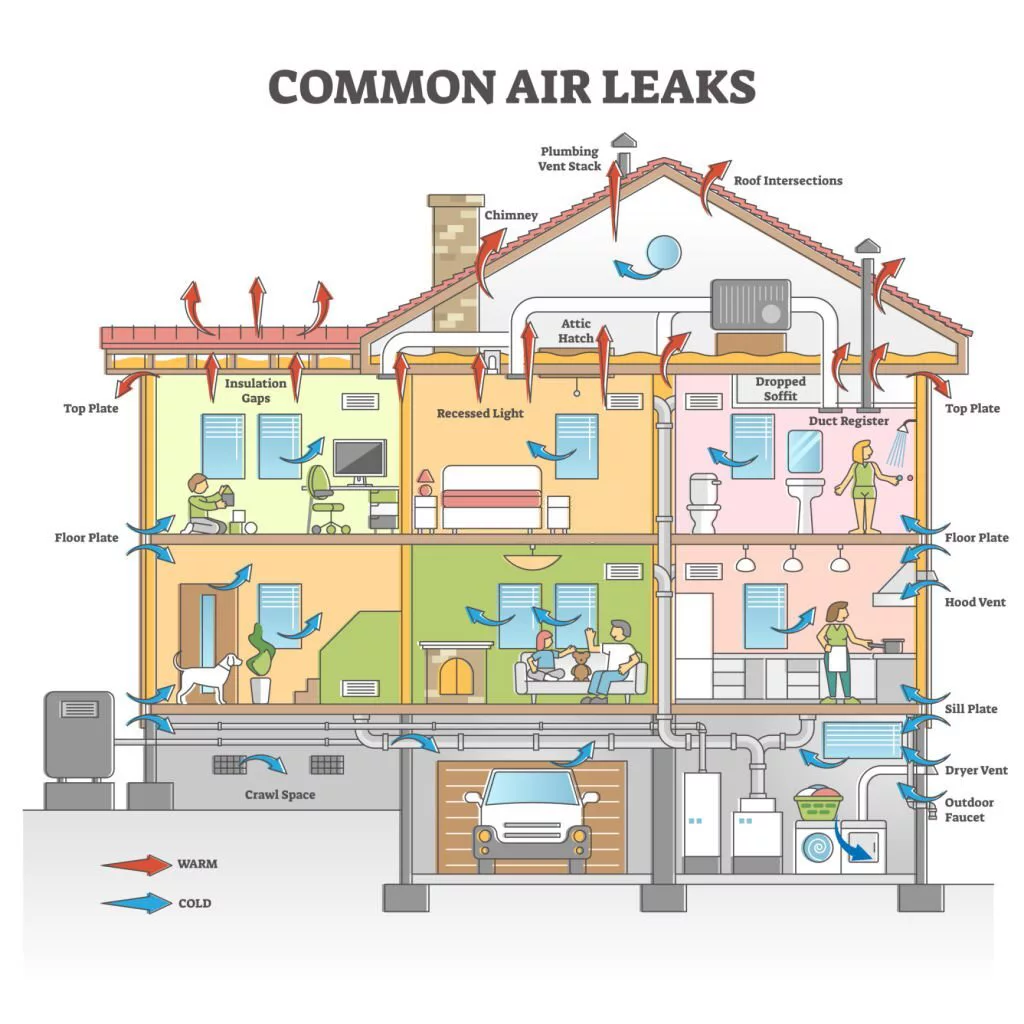Duct leakage testing involves subjecting the ductwork to either negative or positive pressure of 25 pascals. By creating this controlled pressure differential, energy auditors can accurately measure the extent of air leakage within the system. The process begins by installing a large fan at the main return and sealing off all supply outlets and grills. Once the desired pressure is established, the auditors meticulously calculate the airflow to assess the ductwork’s level of tightness.
Duct leakage testing, commonly referred to as “Duct Blasting,” holds significant importance for both new construction homes and existing residential properties. In several Florida counties, it is a mandatory requirement for new construction projects. Additionally, homeowners of existing houses can benefit greatly from this testing procedure as it offers a quick and cost-effective means to identify and address issues that can potentially result in substantial financial losses.
Understanding the importance of conducting duct leakage tests reveals the substantial impact of air leaks within the ductwork. These leaks result in the wastage of conditioned air, which you’ve invested in to heat or cool your living space. Surprisingly, a significant 20-30% of this air escapes even before it reaches its intended destination, dissipating into unconditioned areas like the attic, crawl space, or garage. As a consequence, energy bills skyrocket while compromising the overall comfort of your home. Moreover, the pressurization of these unconditioned spaces provides a conducive environment for mold growth, exacerbating the issue of air leakage within the household. Additionally, a faulty duct system exerts excessive strain on your air handler and condensing unit, leading to reduced lifespan due to their prolonged operation in an attempt to maintain the desired temperature in the conditioned space.
Duct leakage testing is a crucial procedure that plays a significant role in optimizing the efficiency and performance of HVAC systems. By identifying and addressing air leaks in ductwork, this testing procedure ensures that heated or cooled air reaches its intended destinations without unnecessary losses.

Ready to optimize your energy use? Get in touch with us at (813) 355-8254 and let’s make your spaces more energy-efficient. Don’t just save on costs, be a part of the energy efficiency revolution with Calc Wizards!
Calc Wizards © 2023. All Rights Reserved.